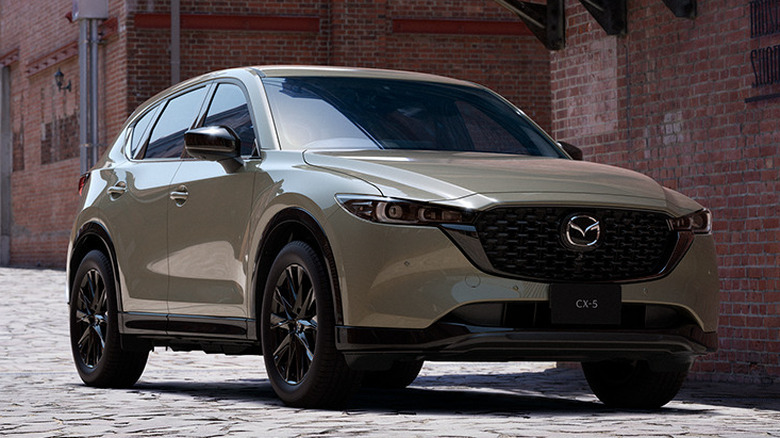Mazda CX-5 Resale Value: How Fast Has The SUV Depreciated?
The resale value of a Mazda CX-5 is directly related to how much depreciation the vehicle experiences — the less depreciation, the higher the resale value and vice versa. The Mazda CX-5 came onto the scene in 2012 and enters its third generation with the 2026 model year. A total of 1.6 million CX-5s have been sold in the U.S., out of 4.5 million sold worldwide, making this one of Mazda's top sellers.
According to CarEdge, a two-year-old Mazda CX-5 would depreciate $12,963, retaining 66.57% of its value with a resale value of $25,815. This assumes that it has been driven 13,500 miles per year or a total of 27,000 miles. Using comparable annual mileage, a five-year-old Mazda CX-5 would depreciate $16,217, retaining 58.18% of its value with a resale value of $22,561.
There are two primary forces that affect how much a given vehicle depreciates — one is time and the other is mileage. This could mean that an older car with lower mileage could sell for less than a newer car with higher mileage. But that's not all you should know before buying a Mazda CX-5. Other considerations when buying a used CX-5 include how well the car was maintained. A well-maintained Mazda CX-5 is definitely a better option than one that has received spotty attention to its needs. Anything more than what Mazda recommends is a bonus. The kind of 'life' it has led is also important, with an abundance of highway driving generally being considered better than years of stop-and-go driving around town.
How does the Mazda CX-5 compare to its competition?
If we compare the Mazda CX-5 to some members of its competitive set, we can see some differences between the CX-5 and the Honda CR-V, the Toyota RAV4 that's the world's best-selling car, and the Subaru Forester. At the two-year mark, the CX-5 retains 66.57% of its resale value, compared to 78.77% for the CR-V, 83.52% for the RAV4, and 77.20% for the Forester. After five years, the CX-5 retains 58.18% of its value, while the CR-V keeps 67.01%, the RAV4 keeps 69.42%, and the Forester keeps 65.98%. What this all means is that on the used market, you should be able to buy a Mazda CX-5 for a lower price than those competitors, due to its greater depreciation, all things being equal. That's good to know when you're out shopping for a used car.
The main takeaway here is to remember that what's bad for the seller is good for the buyer, while the reverse is also true. Greater depreciation means that you can buy a given used car for less, while lower depreciation equals a higher purchase price. High resale values are great for the seller, and high depreciation benefits the buyer. It all depends which side of the transaction you are on. On the other hand, if you have decided that you would really rather have a brand new, third-generation CX-5, here are some things you should know about the soon-to-be-released 2026 Mazda CX-5.

